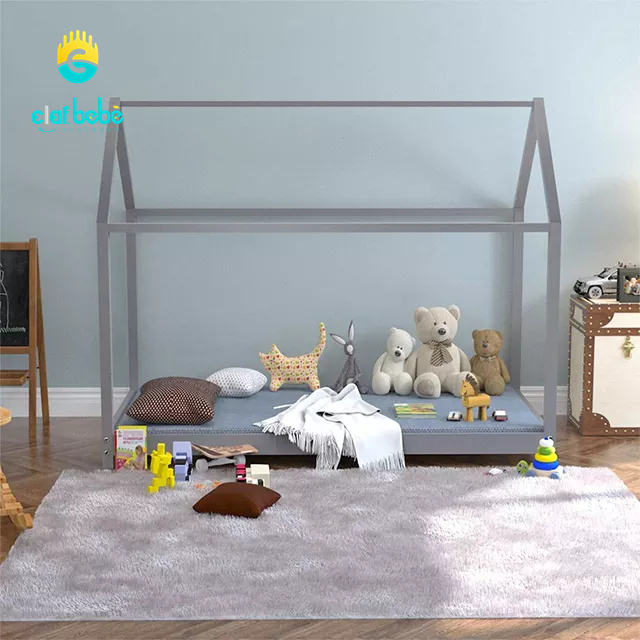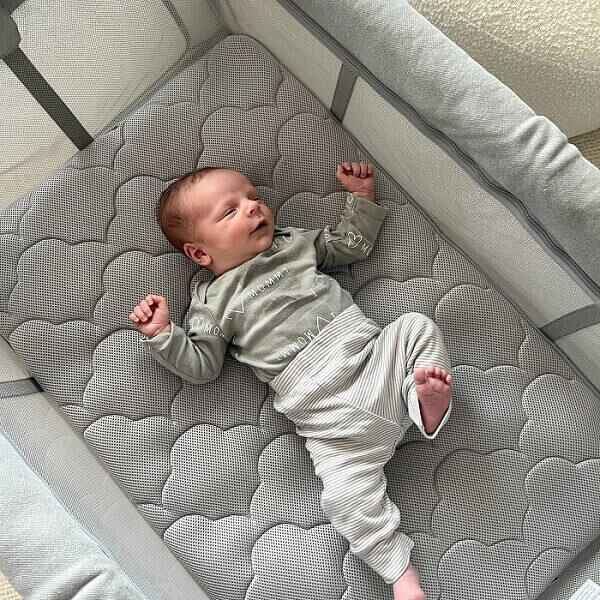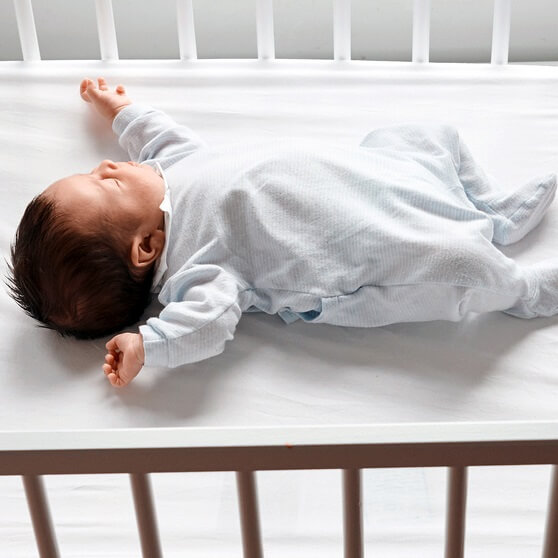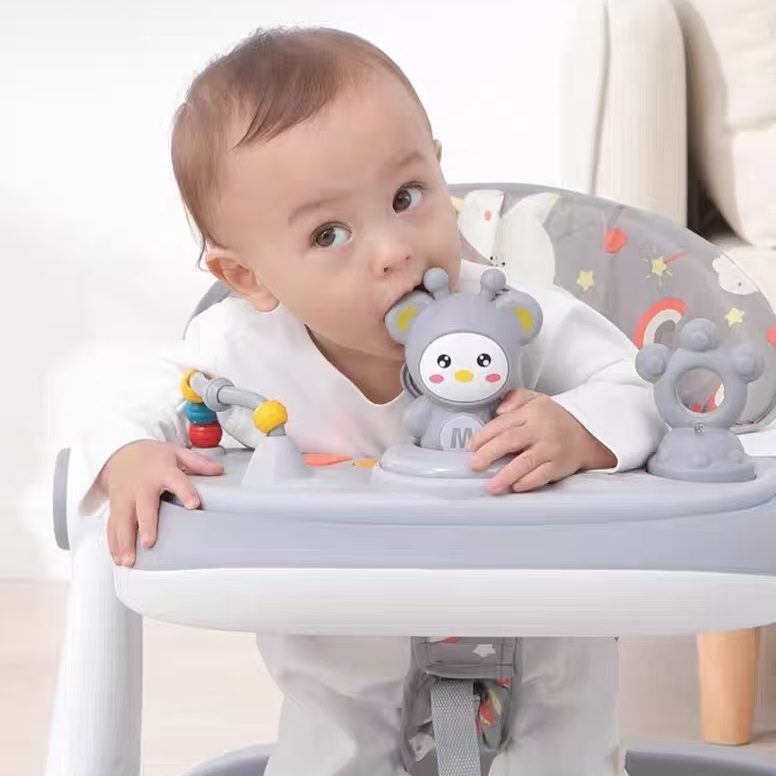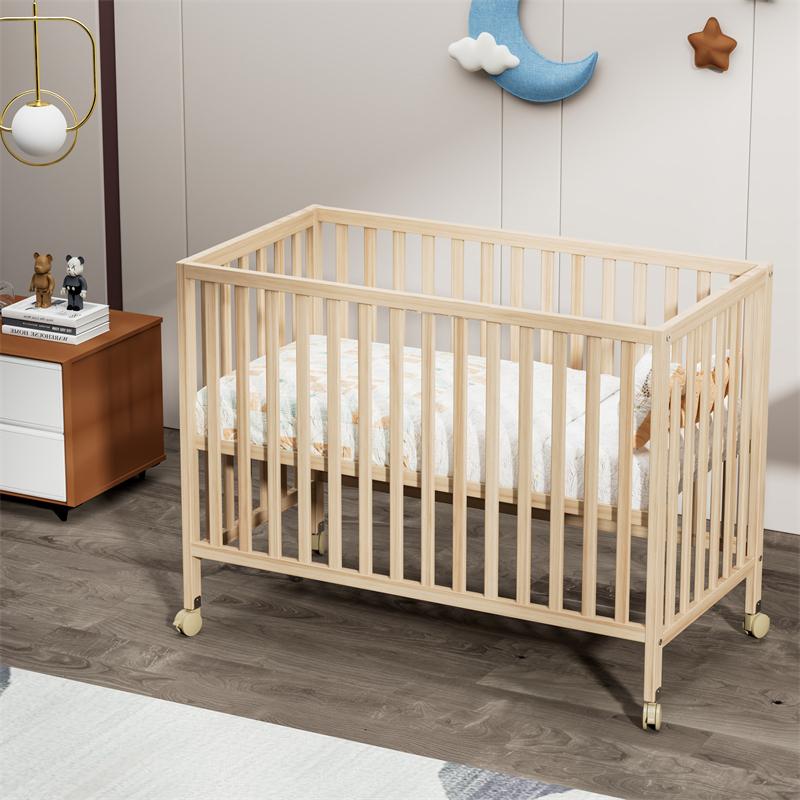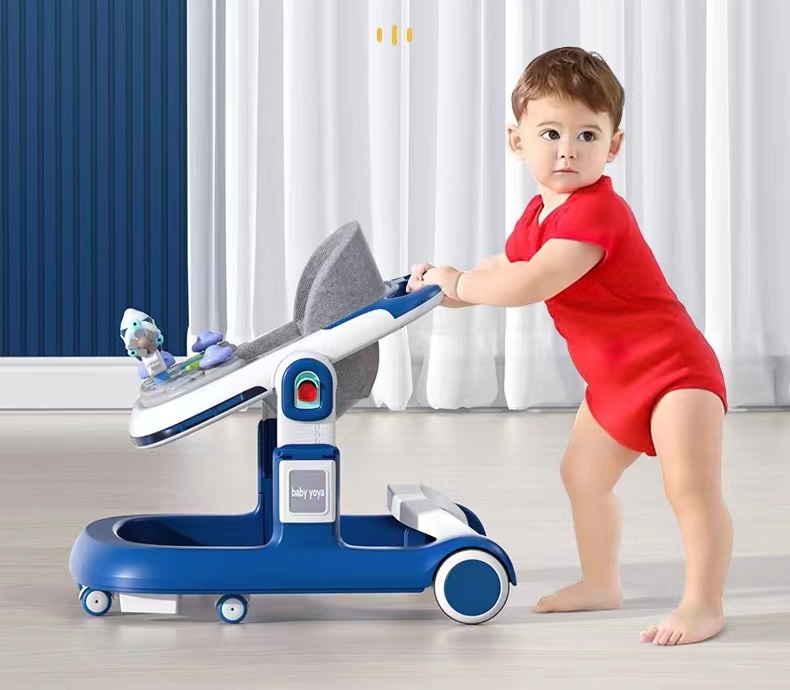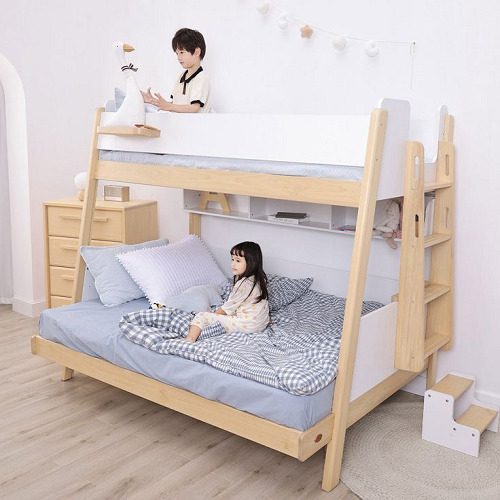Les lits au sol Montessori ont des conceptions simples qui donnent la priorité sécurité des enfants et encourager l'indépendance. Ils sont donc devenus très populaires auprès des parents et des personnes qui s'occupent des enfants ces dernières années. D'autant plus pendant ces années fragiles où les enfants doivent passer du berceau au lit pour tout-petits.
Mais quel est le moment idéal pour faire passer les enfants aux lits Montessori ? Plus important encore, sont-ils sûrs ? Quels sont leurs avantages ?
Lisez la suite pendant que nous répondons à ces questions et à d'autres questions clés sur les lits Montessori et partageons des conseils sur la façon de les utiliser.
L'histoire et les origines des lits au sol Montessori
La méthode Montessori et ses principes
L'idée de Montessori est née le concept Montessori de l'éducation et prendre soin des enfants. Le concept a été lancé par le Dr Maria Montessori au début des années 1900.
Enseignant des enfants issus de quartiers modestes de Rome, le Dr Montessori a adopté une approche différente de celle des autres écoles. Elle a permis aux enfants d'explorer, encouragé l'autonomie et offert des conseils si nécessaire.
Au fil du temps, il est devenu évident que les enfants sous la garde du Dr Montessori s'épanouissaient et étaient plus intéressés par l'apprentissage. Elle a donc encouragé les parents à adopter eux aussi une approche parentale Montessori. Cela implique de permettre aux enfants d'être plus indépendants et libres d'explorer les choses qui les intéressent à travers le jeu et des activités pratiques ou de simples tâches ménagères.
Evolution du concept de lit au sol
Au milieu des années 90, Maria Montessori voyageait et faisait des recherches sur différentes pratiques d’éducation des enfants et leurs avantages.
Durant cette période, elle a découvert des cultures en Inde et ailleurs où les enfants dormaient sur de simples nattes pendant la journée. Les enfants pouvaient facilement monter et descendre des nattes, ce qui les rendait plus sûrs. Les nattes soutenaient également l'idée Montessori de permettre aux enfants d'être plus indépendants, contrairement aux berceaux qui sont beaucoup plus restrictifs.
Le Dr Montessori a approfondi ce concept en l’écrivant et en l’enseignant lors de conférences. Elle a souligné ses avantages et recommandé des moyens de le mettre en œuvre en toute sécurité tout en assurant le confort des enfants.
Les lits au sol sont ainsi apparus en Europe et se sont progressivement imposés dans d'autres pays. Les designs sont désormais plus modernes, mais le concept de base d'un espace de couchage sûr et sans restriction près du sol reste le même. Les fabricants et les consommateurs qualifient ce type de lit de Lits au sol Montessori aussi parce que toute l’idée est associée au travail du Dr Maria Montessori.
Quel est l'intérêt d'un lit au sol Montessori ?
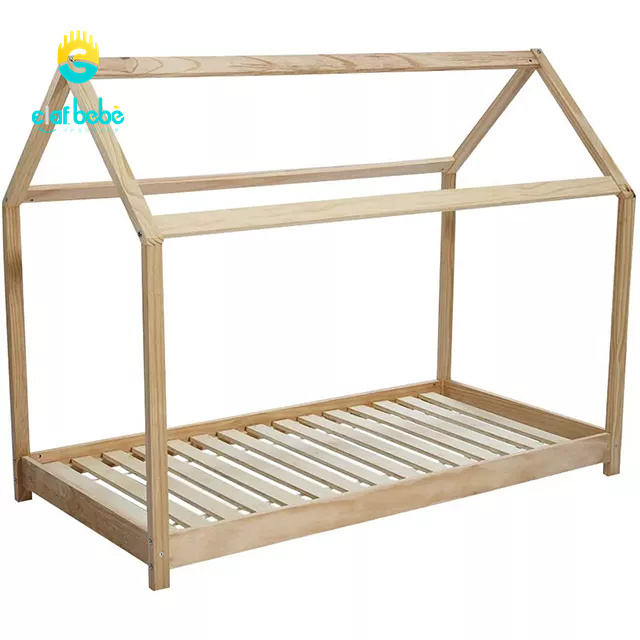
Un lit au sol Montessori devrait idéalement répondre à trois objectifs clés :
1. Offrir un environnement de sommeil sûr
Les lits au sol sont à peine surélevés par rapport au sol. Ils sont donc sûrs pour les enfants car il n'y a aucun risque de chute accidentelle.
De plus, même dans le cas rare où un enfant tomberait d'un lit au sol, la distance entre le matelas et le sol est minime. Il est donc peu probable qu'il subisse des blessures.
Une telle sécurité est une garantie bienvenue, compte tenu du caractère aventureux des tout-petits. Elle peut également apporter une plus grande tranquillité d'esprit aux parents lorsqu'il est temps de changer de lit pour leur enfant.
2. Encourager l’autonomie
Un lit au sol permet aux tout-petits de monter et de descendre du lit en toute sécurité, sans aucune aide. Ils peuvent ainsi devenir plus indépendants et aller aux toilettes ou utiliser le pot quand ils en ont besoin, par exemple.
Une telle autonomie crée un environnement propice à l’apprentissage ainsi qu’à développer les capacités de mobilité et de coordinationCela peut également aider les enfants à avoir moins d’anxiété de séparation, car l’absence de restrictions inutiles sur un lit au sol leur laisse la liberté de se déplacer et de rechercher l’attention de leurs parents lorsqu’ils en ont besoin.
3. Encouragez l’exploration
Les tout-petits deviennent encore plus curieux lorsqu'ils commencent à ramper et à marcher. Limiter leurs mouvements peut donc les frustrer. Cela les empêche également d'apprendre autant qu'ils le peuvent en explorant en toute sécurité.
Créer des espaces sûrs et accessibles permet aux enfants de se déplacer plus facilement et de satisfaire leur curiosité. Un lit au sol Montessori offre cette accessibilité sans compromettre la sécurité.
À quel âge un enfant peut-il utiliser un lit au sol Montessori ?
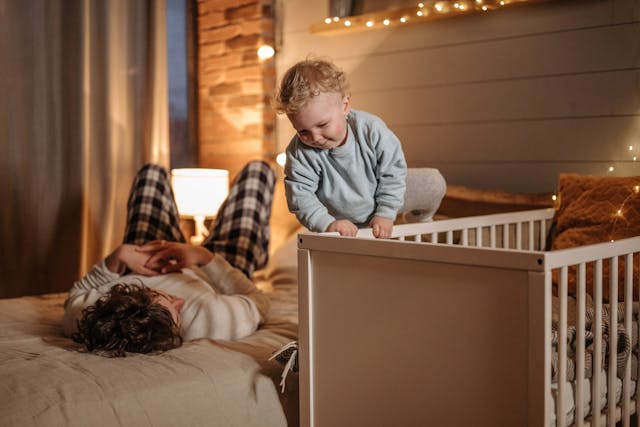
Quand faut-il passer d’un berceau à un lit au sol ?
Il n'y a pas d'âge spécifique pour commencer à utiliser un lit au sol Montessori. Cependant, Les experts pédiatriques recommandent que:
- Les enfants doivent dormir dans la même chambre que leurs parents pendant au moins les 6 premiers mois de leur vie.
- Les parents doivent veiller à ce que les enfants jusqu'à au moins 12 mois dorment sur le dos pour un sommeil en toute sécurité et notamment pour prévenir la mort subite du nourrisson.
Sur cette base, il peut être idéal d'envisager de faire passer les enfants aux lits au sol Montessori lorsqu'ils ont au moins un an ou plus. De plus, cela peut être un calendrier approprié pour les transitions de sommeil, car les enfants de cet âge peuvent se déplacer et ainsi profiter des avantages d'un lit au sol Montessori.
Signes que votre enfant est prêt
La méthode Montessori préconise de prendre en compte les besoins uniques de l'enfant lors de son éducation ou de son éducation. Par conséquent, l'une des meilleures façons de déterminer le moment où il faut faire passer un enfant à un lit au sol Montessori est d'observer comment il gère ses conditions de sommeil actuelles. Cela vous permettra de repérer les signes indiquant qu'il est temps de procéder à un changement.
Voici quelques signes à surveiller :
Devenir trop grand pour un berceau : Lorsqu'un enfant ne se sent plus à l'aise dans son lit, une transition est inévitable. L'avantage, cependant, est que vous pouvez commencer à lui faire comprendre à quel point il a grandi et pourquoi il a maintenant droit à un lit plus grand. Cela lui permet souvent d'accepter plus facilement le changement.
Tentatives de sortir de leur berceau : Les tout-petits ont souvent des idées très créatives pour sortir de leur lit. Même si cela peut être amusant, c'est aussi dangereux et c'est le signe qu'ils ont besoin de plus de liberté. Les déplacer vers un lit Montessori au sol leur offrira exactement cela.
Dormir toute la nuit : Lorsqu'un tout-petit peut dormir toute la nuit, vous n'avez pas à vous inquiéter de le voir errer la nuit ou avoir peur lorsqu'il se réveille dans son propre lit. C'est donc le moment idéal pour lui faire découvrir la liberté d'un lit au sol.
Quelle préparation est nécessaire pour passer à un lit au sol Montessori ?
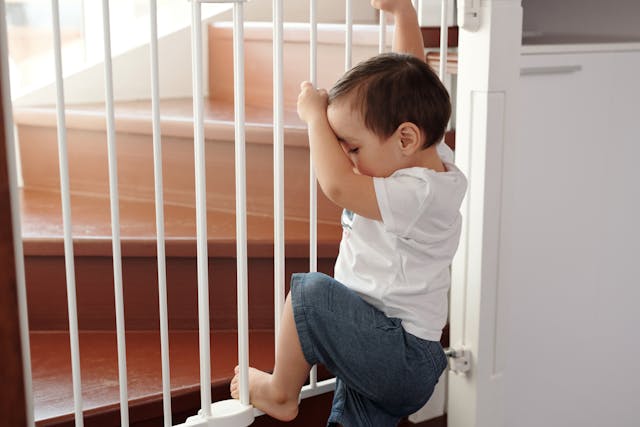
Le passage d'un tout-petit à un lit au sol Montessori lui donne beaucoup de liberté pour explorer. Il est donc essentiel de créer un environnement sûr pour le sommeil et l'aventure. Voici comment gérer le processus de préparation.
1. Nettoyez la pièce
Dormir si près du sol n'est sûr que si le sol et l'espace entier sont propres. Commencez donc par nettoyer la pièce, y compris les zones de poussière courantes comme les plinthes de sol. Assurez-vous également que le sol est sec pour éviter que des moisissures ne se forment sur le lit Montessori.
2. Atténuer le froid
Certains types de sols peuvent devenir très froids même si la maison est bien isolée. Si c'est le cas chez vous, envisagez des solutions pour atténuer le froid, comme l'installation d'une moquette.
Vérifiez également les interstices sous la porte et évaluez s'ils laissent entrer des courants d'air. Vous pouvez résoudre ce problème en scellant les interstices ou en aménageant la pièce de manière à ce que les courants d'air ne pénètrent pas directement dans le lit Montessori.
3. Sécurité enfant
Sécurité des enfants rend la pièce sûre pour qu'un tout-petit puisse dormir et jouer dans son espace même sans la surveillance constante d'un adulte. Cela implique :
- Sceller toutes les prises de courant
- Gardez les cordons électriques ou les bandes d'éclairage hors de portée
- Installation de butées de porte et de barrières
- Retirer tous les objets tranchants de la pièce
- Éliminer tous les risques d’étouffement
- Supprimer les obstacles inutiles
- Garder les objets essentiels comme les jouets, les livres et les interrupteurs d'éclairage à un niveau accessible à un enfant
4. Décorer
Prenez le temps de rendre l'espace agréable en installant du papier peint ou en le peignant dans des couleurs gaies et en ajoutant le type de jouets que votre enfant peut apprécier. Un espace de sommeil attrayant contribue considérablement au bien-être d'un enfant. Il est également plus susceptible d'inciter un enfant à faire la transition vers le sommeil autonome.
5. Choisissez un lit au sol Montessori adapté
Comparez les lits Montessori au sol et choisissez celui qui est sûr et qui plaira à votre enfant. Si le lit n'est pas livré avec un matelas, vérifiez ses dimensions et trouvez un matelas adapté. Terminez ce processus en choisissant une literie confortable pour le lit Montessori au sol.
Comment passer à un lit au sol Montessori : un guide étape par étape
Tout changement dans la routine habituelle d'un enfant est un processus. Après tout, le changement est effrayant, même pour les adultes. Alors, lorsque vous commencez à penser à faire passer votre enfant à un lit au sol Montessori, voici comment procéder et à quoi vous attendre.
1. Établissez un calendrier
Déterminez le moment auquel vous souhaitez amorcer la transition afin de pouvoir vous y préparer à temps. Une telle planification vous permettra de préparer le nouvel espace de couchage et de préparer votre tout-petit au changement.
Prévoyez une période calme pour commencer la transition. Par exemple, les périodes où l'enfant fait ses dents ou est malade ne sont pas forcément idéales et il est plus susceptible de résister. En revanche, s'il va bien et que tout est relativement normal, il est plus susceptible de mieux gérer le changement.
2. Commencez par des siestes
Le changement progressif est beaucoup moins intimidant. Donc, si votre tout-petit n’est pas si impatient de changer, commencez la transition lentement. Vous pouvez d’abord le placer sur le lit au sol pour faire la sieste pendant la journée, puis une fois qu’il s’est habitué à la chambre et au nouveau lit au sol, vous pouvez faire la transition pour qu’il y dorme également la nuit.
3. Expliquez-leur comment procéder
Aidez votre enfant à apprendre à monter et descendre correctement du lit au sol. S'il y parvient correctement, il sera en sécurité et il découvrira à quel point le lit au sol lui offrira indépendance et liberté.
De plus, si vous faites passer un tout-petit à un lit au sol Montessori, faites l’effort de lui expliquer en douceur le changement. Il s’en sortira probablement mieux s’il a une idée même approximative de ce qui se passe. Rassurez-le s’il a des doutes et rappelez-lui qu’il peut toujours vous appeler ou venir vers vous quand il en a besoin.
4. Faites preuve de patience
Les premiers jours peuvent être difficiles et les enfants peuvent parfois régresser et vouloir revenir à leurs anciennes habitudes de sommeil. Réconfortez-les si cela se produit, mais restez cohérent avec les nouvelles habitudes de sommeil.
Conseils pour le lit au sol Montessori
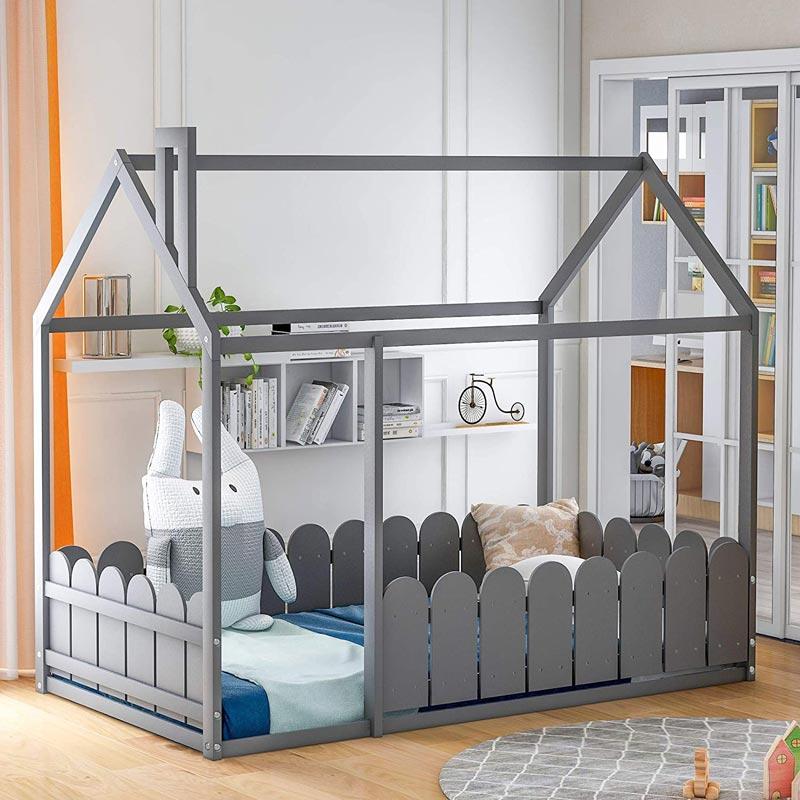
Choisir le bon lit au sol Montessori est essentiel pour la sécurité, le bien-être et le confort de votre bébé. Tenez compte des éléments suivants :
1. Considérations sur la conception du lit au sol Montessori
Choisissez le bon cadre de lit
Privilégiez les cadres de lit Montessori au sol qui s'adaptent à l'espace dont vous disposez chez vous. Tenez compte à la fois de la hauteur et des dimensions du sol.
En ce qui concerne la base, il n’existe pas de règle absolue, mais une base surélevée est souvent avantageuse. Elle facilite grandement le nettoyage. De plus, les cadres de lit Montessori surélevés sont moins sujets à la moisissure car ils laissent de la place à la respirabilité.
Choisissez une disposition raisonnable
Imaginez les agencements de pièces que vous pouvez utiliser en fonction de l'espace et de la forme de la chambre de votre enfant. Cela vous aidera à choisir l'agencement le plus sûr et le plus adapté et à choisir un lit Montessori adapté.
Choisissez le bon matelas et la bonne literie
Le matelas idéal devrait :
- Ajustez correctement le lit et restez uniformément plat
- Soyez suffisamment ferme pour qu'il ne s'affaisse pas lorsque du poids est exercé dessus. Ceci est crucial pour sommeil en toute sécurité.
La literie adaptée dépendra de l'âge de votre enfant :
- Pour les enfants de 12 mois et moins, les experts recommandent uniquement un drap plat pour un sommeil en toute sécurité. Aucun drap ou oreiller non fixé ne doit se trouver sur le lit.
- Pour les enfants de plus d’un an, un ensemble complet de literie est acceptable.
Optez pour des tissus respirants pour un confort optimal. Vous pouvez également aller plus loin et choisir des tissus hypoallergéniques. D'autant plus si votre enfant est sujet aux allergies.
2. Considérations de sécurité
Lors de la sélection d'un lit au sol Montessori, faites attention aux problèmes de sécurité tels que :
La qualité des matériaux utilisés pour fabriquer le lit
Recherchez des lits Montessori fabriqués à partir de bois durable de qualité. Le bois naturel est idéal. Cependant, si vous choisissez un modèle en bois d'ingénierie comme le MDF, il doit être de haute qualité et avoir les émissions de COV les plus faibles possible.
Vérifiez également tous les autres intrants tels que les adhésifs, les peintures ou les vernis et confirmez qu’ils ne sont pas toxiques.
Stabilité structurelle
Un lit Montessori au sol doit être stable et capable de supporter une quantité importante de poids. Repensez aux modèles qui ont une limite de poids faible, car ils ne vous serviront probablement pas longtemps. Les grincements ou les secousses sont également un motif d'alarme, car ils peuvent indiquer une faible intégrité structurelle.
Finition lisse
Comme tous les produits pour enfants, tous les éléments d'un lit de sol doivent avoir une finition lisse. Cela permet d'éviter les accidents tels que les échardes et les rayures dues aux bords rugueux.
Lit au sol Montessori vs. berceaux traditionnels
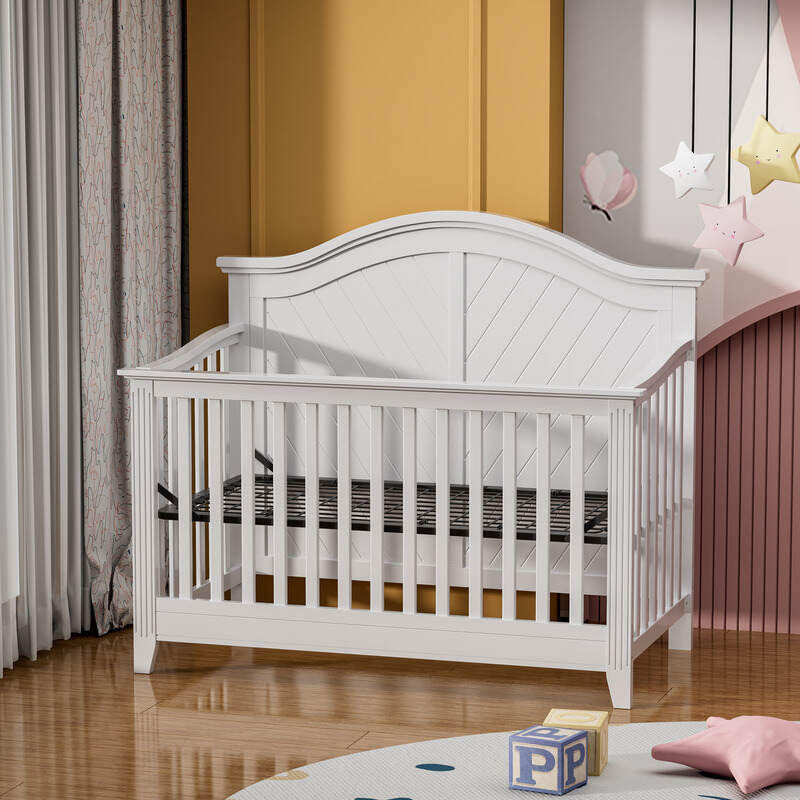
Il n’est pas rare d’hésiter entre un lit Montessori et un lit d’enfant traditionnel. Pourtant, il n’y a pas de bon ou de mauvais choix. Il vous suffit de peser les deux options et de déterminer laquelle conviendrait le mieux à votre maison.
Principales différences
Conception
Un berceau traditionnel est doté d'une structure surélevée avec des barreaux qui forment un périmètre autour de lui. Les barrières servent à protéger les nourrissons et les tout-petits des chutes, mais elles les empêchent également d'entrer et de sortir du berceau de manière autonome. Cela diffère d'un lit au sol Montessori qui a un profil bas près du sol et aucune barrière restrictive pour permettre la libre circulation.
Considérations de sécurité
Les berceaux traditionnels, qui répondent aux normes de sécurité en vigueur, protègent les enfants des chutes et de nombreux autres accidents. Ils ne présentent un risque que si l'enfant tente de sortir du berceau sans aide.
Les lits Montessori au sol sont tout aussi sûrs car ils sont très proches du sol et réduisent ainsi le risque de chute. Ils offrent cependant une grande liberté et ne peuvent donc être utilisés en toute sécurité que dans des pièces correctement protégées contre les enfants.
Liberté
Les lits bébé limitent la liberté de mouvement de l'enfant car il ne peut monter et descendre qu'avec l'aide d'un adulte. En revanche, un lit de sol Montessori offre une liberté dès le départ, car les enfants peuvent monter et descendre sans aide.
Longévité et rentabilité
Les enfants ne peuvent dormir dans un berceau que pendant une durée limitée, car ils finissent par devenir trop grands. Le facteur temps ne peut qu'augmenter si le berceau est convertible en lit pour tout-petit.
Un lit de sol Montessori offre une grande longévité car un enfant peut l'utiliser dès son plus jeune âge jusqu'à ce qu'il devienne trop grand. Il est donc également plus rentable car il offre un meilleur rapport qualité-prix.
Avantages et inconvénients d'un berceau traditionnel
Avantages
- Le cododo:Les parents peuvent dormir en toute sécurité avec leur bébé en utilisant un berceau.
- Surveillance parentale : Les berceaux permettent aux parents et aux soignants de surveiller leurs enfants dans des environnements qui ne sont pas protégés contre les enfants, comme les hôtels, pendant les voyages.
Inconvénients
- Dépendance: Les côtes rendent les enfants dépendants de leurs soignants au lieu de les inciter à développer et à explorer leurs capacités autonomes.
- Utilité limitée : Les berceaux de qualité peuvent coûter une somme assez importante mais ne peuvent servir aux familles que pendant une courte période.
Avantages et inconvénients du lit au sol Montessori
Avantages
- Liberté et autonomie:Un lit au sol Montessori et une configuration de couchage aident les jeunes à découvrir tout ce qu'ils peuvent faire par eux-mêmes parce qu'ils ne sont pas obligés de dépendre de leurs soignants.
- Une meilleure approche du développement de l’enfant:Une configuration de sommeil Montessori permet de garder à portée de main les essentiels de l'enfant, comme les jouets, les livres et son lit. Elle est plus saine pour le développement de l'enfant car elle adapte la chambre à l'enfant au lieu de le forcer à s'adapter à la chambre.
Inconvénients
- Défis de sécurité:la liberté qu'offre un lit Montessori peut être préjudiciable si l'environnement n'est pas à l'épreuve des enfants.
- Routine de sommeil perturbations: Les enfants peuvent parfois tomber de leur lit Montessori et finir par dormir dans des endroits inhabituels de leur chambre. Ils peuvent également se réveiller à volonté une fois qu'ils ont découvert leur liberté.
Conclusion
Les lits Montessori au sol créent un environnement de sommeil sain qui favorise le développement sain de l'enfant. Certes, ils peuvent être différents des berceaux traditionnels que nous rencontrons dans la plupart des foyers, mais un changement positif est toujours un pas dans la bonne direction.
Assurez-vous simplement de respecter les conseils de sécurité recommandés pour un espace de couchage avec lit au sol Montessori et, bien sûr, de rendre la pièce aussi belle que votre tout-petit le mérite.
Pourquoi Clafbebe?
Chez Clafbebe, nous concevons et fabriquons des meubles pour bébé en pensant aux familles. Nous ne ménageons aucun effort pour garantir que l'utilité, la qualité et la sécurité de chaque lit de sol Montessori que nous fabriquons répondent aux normes les plus élevées. Il ne s'agit pas seulement de réaliser une vente pour nous. Nous nous efforçons de répondre aux besoins de nos clients à leur entière satisfaction.
Contactez-nous aujourd'hui et nous vous livrerons les lits au sol Montessori dont vous avez besoin pour votre marque ou votre entreprise.
Articles connexes recommandés :


